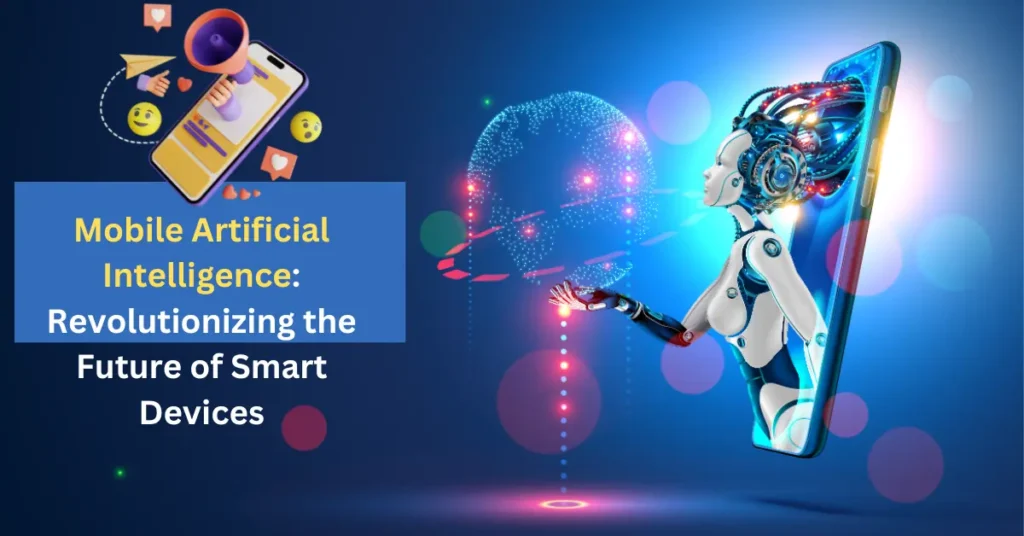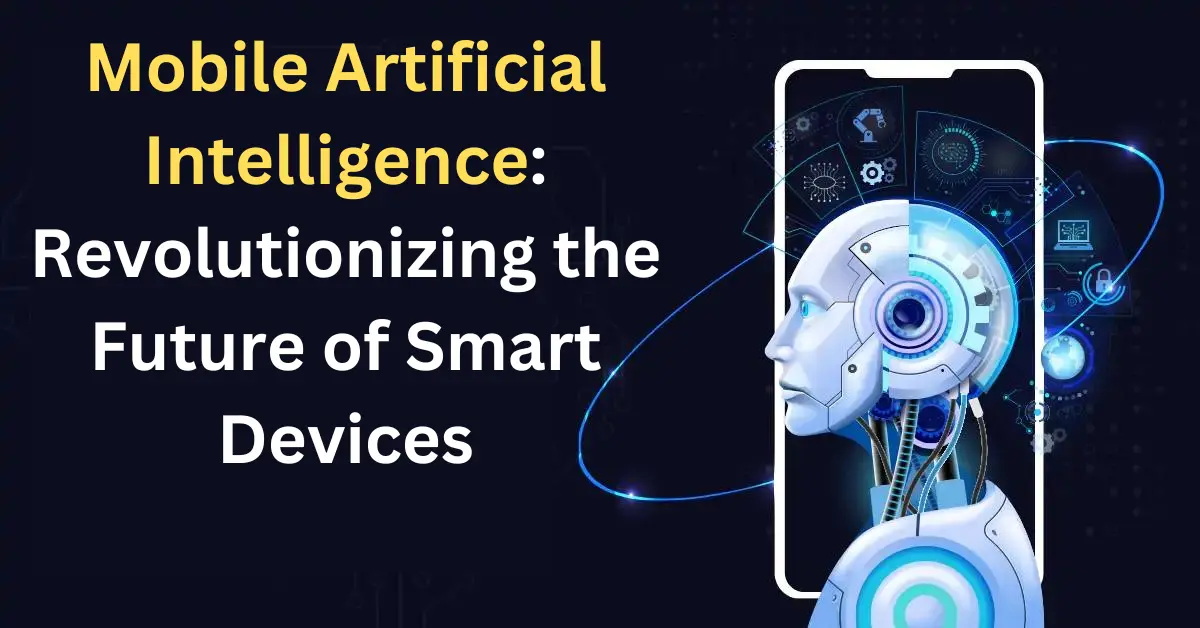Mobile Artificial Intelligence: Revolutionizing the Future of Smart Devices
Mobile AI is quickly changing the face of modern technology. Its incorporation into mobile devices has resulted in substantial shifts in user-technology interaction, resulting in better user experiences, personalization of services and increased efficiency across different sectors. This article discusses the major highlights on Mobile AI, its applications, challenges and future.
Mobile AI isn’t just a fad but a game-changer that’s changing how we use our phones and see the world. It has an impact on everything from making apps better to causing a revolution in different fields. There’s still so much we can do with Mobile AI – we’ve scratched the surface. As tech keeps getting better, Mobile AI will be key in shaping what’s next for phones and more.
What is Mobile Artificial Intelligence?
Mobile Artificial Intelligence involves putting AI tech into mobile devices. This covers machine learning natural language processing, computer vision, and other AI-powered features. These allow smartphones and other mobile gadgets to do jobs that need human smarts. Mobile AI differs from regular AI, which often depends on strong central computing power. Instead, it works right on the device using edge computing to give quick insights and actions in real time.
Key Applications of Mobile AI
- Enhanced User Experience:
- Voice Assistants: Mobile AI has significantly improved the capabilities of voice assistants like Siri, Google Assistant, and Alexa. These assistants can now understand and respond to complex queries, perform tasks, and even predict user needs based on past behavior.
- Personalized Recommendations: AI algorithms analyze user behavior to provide personalized content, whether it’s in the form of music recommendations, shopping suggestions, or tailored news feeds.
- Camera and Image Processing:
- Smart Cameras: Mobile AI has revolutionized smartphone photography. AI-powered cameras can recognize scenes, optimize settings in real-time, and even suggest the best composition for a shot. Features like portrait mode, night mode, and augmented reality (AR) effects are all driven by AI.
- Image Recognition: Mobile AI enables devices to recognize objects, faces, and even emotions in images. This technology is widely used in social media apps, security features like facial recognition, and AR applications.
- Health and Fitness:
- Activity Tracking: AI algorithms in fitness apps can analyze data from various sensors to provide insights into users’ health, recommend workouts, and monitor vital signs.
- Predictive Health Monitoring: Mobile AI is also making strides in predictive health. For instance, it can analyze patterns in heart rate data to predict potential health issues before they become critical.
- Security and Privacy:
- Biometric Authentication: AI-driven biometric authentication methods, such as facial recognition and fingerprint scanning, have enhanced the security of mobile devices.
- Threat Detection: Mobile AI can detect unusual patterns of behavior or potential security threats, enabling proactive measures to protect user data.
Challenges in Mobile AI

Despite its numerous advantages, Mobile AI faces several challenges:
- Privacy Concerns: With AI collecting and analyzing vast amounts of personal data, privacy remains a significant concern. Ensuring that user data is protected and used ethically is crucial for the widespread adoption of Mobile AI.
- Processing Power and Battery Life: Running AI algorithms on mobile devices requires substantial processing power, which can drain battery life. Striking a balance between performance and energy efficiency is a critical challenge for developers.
- Data Security: As Mobile AI increasingly relies on data, securing that data from breaches and unauthorized access is a priority. This involves implementing robust encryption methods and secure data storage solutions.
- Integration with Legacy Systems: Integrating AI capabilities with existing mobile operating systems and applications can be complex, particularly when dealing with legacy systems that weren’t designed with AI in mind.
The Future of Mobile AI
The future of Mobile AI is promising, with ongoing advancements in AI research and mobile hardware paving the way for even more sophisticated applications. Key trends to watch include:
- Edge AI: As edge computing becomes more prevalent, AI processing will increasingly occur on-device rather than in the cloud. This will enable faster response times, reduced latency, and improved privacy, as less data will need to be transmitted to remote servers.
- 5G Connectivity: The rollout of 5G networks will enhance the capabilities of Mobile AI by providing faster data speeds and lower latency. This will enable more complex AI-driven applications, such as real-time language translation and immersive AR experiences.
- AI-Driven User Interfaces: Future mobile devices may feature AI-driven user interfaces that adapt to individual users, learning their preferences and habits to provide a more intuitive and personalized experience.
- Sustainability and Efficiency: As concerns about environmental impact grow, future developments in Mobile AI will likely focus on creating more energy-efficient algorithms and hardware, minimizing the carbon footprint of AI technologies.
According to Value Market Research, the global demand for the Mobile Artificial Intelligence (AI) market is expected to grow significantly, with the market size projected to reach approximately USD 192.83 billion by 2032, up from USD 19.78 billion in 2023. This impressive growth, with a compound annual growth rate (CAGR) of 28.79% during the forecast period of 2024-2032, highlights the rapid adoption and expansion of AI technologies in mobile devices, driven by advancements in computing power, machine learning, and the widespread integration of AI across various applications.
ALSO READ : What is FLUX.1, a new open-source AI image generator to take on Midjourney?

I am Swapnil Duphare , Owner of Website : SpeedTestsWifi – I am Digital Marketer from last 6 Years and Write Blog Articles based on Internet and Speed Testing tool websites.
I am From Nashik, Maharashtra, India.
